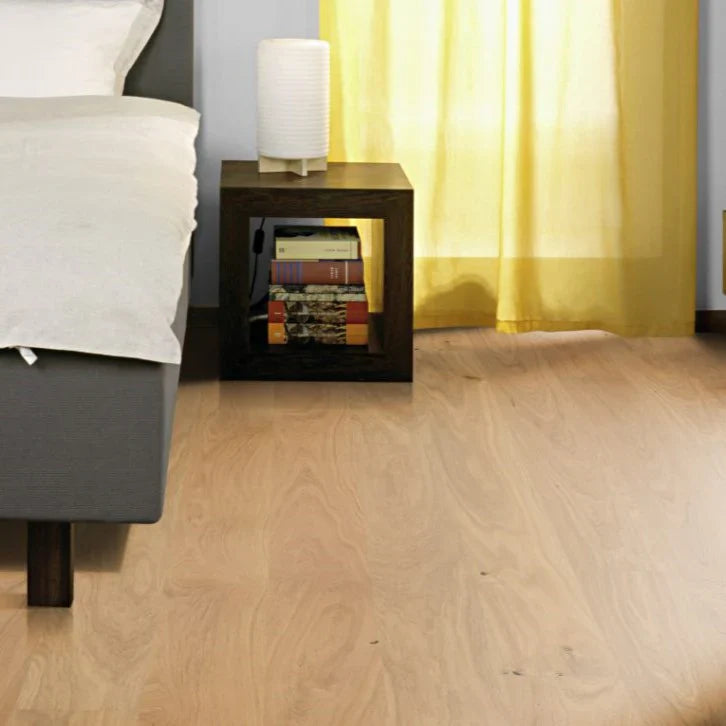
Author, Written by: P. Hirani (Wood flooring Expert)
Flooring does more than ground your space—it also plays a surprisingly big role in how natural light flows through your home. Whether you're trying to brighten a north-facing room or soften a sun-drenched space, the color of your floor can enhance (or diminish) your lighting in subtle but powerful ways.
So, how exactly does floor color impact light? And how do you choose the right tone to make the most of your home's natural illumination? Let’s take a closer look.
1. Light Floors Reflect Light and Open Up a Room ☀️
Light-colored floors—like pale oak, blonde wood, or soft greys—are excellent at bouncing light around a room. They help brighten darker spaces and make smaller rooms feel more spacious.
✔ Ideal for rooms with limited natural light
✔ Create an airy, open feel
✔ Enhance cool daylight tones without overpowering them
🌿 Best in: Basements, hallways, apartments, or north-facing rooms that need a lift.
2. Medium-Tone Floors Offer Balance and Warmth 🌤️
Mid-tone flooring—think honey oak, greige, or natural bamboo—offers the best of both worlds. It reflects just enough light to keep a room feeling bright while adding warmth and depth.
✔ Works in almost any room or lighting condition
✔ Doesn’t show dirt and dust as easily as light or dark floors
✔ Pairs well with both warm and cool color palettes
🎯 Best in: Open-plan spaces, kitchens, or family rooms where you want a welcoming, balanced look.
3. Dark Floors Absorb Light and Create Contrast 🌑
Dark wood tones like espresso, walnut, or charcoal make a bold statement—but they also absorb more light, which can make a room feel moodier or smaller if you’re not careful.
✔ Great for creating drama and contrast
✔ Works best in rooms with ample natural light and tall ceilings
✔ Adds richness and sophistication to modern or traditional interiors
💡 Light tip: Pair with light-colored walls, large windows, or mirrors to prevent the room from feeling too enclosed.
4. Finish Matters Just as Much as Color ✨
It’s not just the color of your flooring—it’s also the finish that affects how it interacts with light.
-
Glossy finishes reflect more light, often giving the room a shinier, polished look—but they can also highlight dust or imperfections.
-
Matte or satin finishes diffuse light more gently, creating a softer, more natural ambiance.
🔎 Design tip: Use matte floors in bright rooms to avoid glare, and consider a subtle sheen in darker spaces to help bounce light.
5. Use Flooring to Direct the Eye
Strategic use of floor color can help guide visual flow and control how light moves through connected spaces.
✔ Use lighter flooring in smaller or enclosed rooms to help them feel more open
✔ Transition to deeper tones in larger areas to ground the space and create definition
✔ Consistent undertones (warm or cool) help keep the overall look cohesive—even if colors vary slightly
🧭 Bonus: Flooring with a visible grain or texture can add interest without affecting how much light the room receives.
Setting the Tone—Literally
The right flooring color can transform how natural light behaves in your home—enhancing brightness, adjusting the mood, and complementing your interior style. Whether you're going for breezy and bright or cozy and grounded, your choice of floor color is a subtle but powerful tool.
✨ Not sure which floor tone suits your space best? We’re here to help with advice, samples, and design ideas tailored to your lighting and layout.
About Author:
Peter H. is a flooring product expert who knows all about different types of flooring materials. He shares his knowledge in blogs to help readers make the best choices for their spaces.
